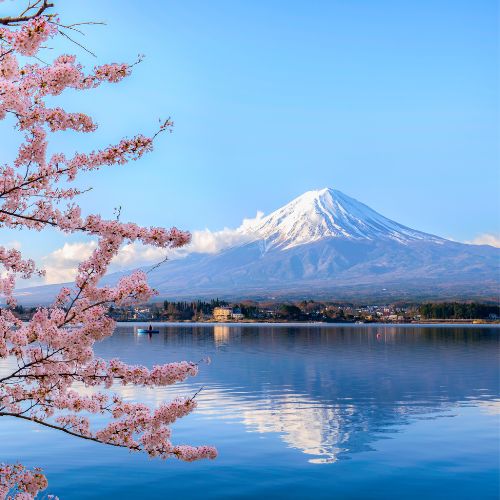
We are reader-supported and may earn a commission on purchases made through links in this article.
Japan’s Imperial family resided in Kyoto, the ancient capital, for over 1,000 years, which accounts for the fact that an estimated 2,000 age-old shrines, temples and castles blanket the city.
Today, Kyoto is considered the cultural and historical heart of the country, and 17 of these wonders of antiquity have been registered as World Heritage Sites. The perplexing question that every interested traveler to Kyoto faces; where to begin?
Within the city limits, we visited one of each: Fushimi Inari Shrine, Sanju-sangen-do-do Temple and Nijo-Jo Castle. I found these historically significant, World Heritage landmarks mesmerizing. Shinto Shrines and Buddhist Temples pop up everywhere, so travelers without time-limited itineraries have an endless list to choose from to explore.
Fushimi Inari Shrine

Dedicated to the Shinto god of rice and agriculture, the Fushimi Inari Shrine stands out as one of the most famous images of Japan. It is considered foremost of 30,000 Inari Shrines in Japan. Perhaps like most visitors, I experienced an almost spiritual feeling while passing through 10,000 bright orange torii gates that weave their way through the forest on a path up to the top of Mt. Inari.
Along the trail and at the summit, personal Shinto shrines, dedicated to deceased loved ones, have been created by private citizens. An endless array of miniature, vermillion shrines edge the footpath surrounding a lake at Mt. Inari’s peak.
Stone statues of the Inari Fox, positioned at the Shrine entrance, represent the Shinto God’s belief that these animals act as messengers. Red bibs placed around the foxes’ necks provide protection from evil. The Inari Fox tradition remains sacred even today, and many Japanese bring offerings of food to place at the base of the carved statues.
Read More: Three Sites to Soothe the Soul in Kyoto, Japan
Sanju-sangen-do-do Temple

This Buddhist temple, founded in 1164, is an absolute ‘must see,’ at least from my perspective. I could not fathom the workmanship required to carve painstaking details on 1000, standing, human-sized figures of Kannon, the Buddhist Goddess of Compassion, one large, seated Kannon and 28 guardian statues.
Planning a last-minute trip to Japan?
Top Experiences and Tours in Japan:
- See the sights with a tour of Tokyo: Full-Day Private Tour with Nationally-Licensed Guide
- See Mount Fuji on the Private Full Day Sightseeing Tour to Mount Fuji and Hakone
- Explore more with this tour of Tokyo Half-Day Private Tour with Government-Licensed Guide
Where to stay in Japan:
- Find accommodation with Booking.com
- Find your dream apartment in Japan with Agoda
- Find a hostel in Japan with Hostelworld
Every figure, hand-carved from Japanese cypress, and covered in gold-leaf, has 42 arms and 11 faces to see human suffering clearer. The expression on the primary face of each individual Kannon appears to be different. The figures are positioned in 50, tight diagonal rows, along the entire length of the longest wooden building in Japan, which has remained unchanged for 700 years.
Who were the carvers? How long did it take to complete? What does the number 1001 signify? The questions just flew around in my head while I absorbed this massive scene as a whole and stared at the impressive individual pieces. The Temple is registered as a National Treasure of Japan.
Nijo-Jo Castle

Nijo-Jo Castle, built in 1603 during the Edo period, the golden age of Japanese, ornate architecture, has been the site of some of the most important events in Japanese history during the past 400 years.
The first Shogun of Japan, Togukawa, ushered in the beginning of 260 years of peace and prosperity which lasted through 15 generations of his family. Nijo-Jo Castle served as residence for the Shogun when he was in Kyoto, and samurai guards kept watch over the castle when the feudal lord traveled to Tokyo.
The castle also welcomed the Emperor of Japan on several occasions throughout history, including when Japan discontinued its practice of isolationism from the rest of the world and opened up the country to create a modern State.
The main building has huge receiving rooms, with secret compartments built within the thin walls, where the samurai hid to keep watch and protect the Shogun during receptions for visiting nobility. About 3,600 Japanese style paintings crowd the walls of all buildings within the castle complex.
The floorboards through the long corridors have been termed ‘nightingale’ floors, as they creak when stepped on to alert the guards of the presence of intruders. The validity of this ‘floor folktale’ remains questionable. If the traveler has a thirst for Japanese historical events, the Nijo-Jo Castle provides the architectural framework where these events occurred.
Read More: 20 Japanese Customs Every Visitor to Japan Should Know
Nara, First Ancient Capital

A short ride outside Kyoto city-limits, the magical town of Nara and its many historic treasures waits. Established in the year 710, it was recognized as the first permanent capital of Japan. We were on our way to see Todai-ji Temple, a UNESCO Heritage Shrine, constructed in 752, and housing Japan’s largest Bronze Buddha.
Before arriving at the Temple complex, a shocking surprise literally sprang before our eyes. Tame, free- roaming Sika deer were romping through local residents’ yards and crossing the road with their obvious right–of-way.
The numbers of these deer increased as we neared Nara Park, and once inside the Temple complex, the herd had quadrupled. Over 1000 deer have National Treasure status and cannot be bothered or harmed in any way by tourists or residents alike.
Considered messengers from the Gods, the animals approach visitors without hesitation, looking for food. Amazingly, we saw the deer bow their heads when given food that can be purchased from dispensers on the path to the Temple. I wouldn’t recommend this as all the deer in the area, aggressively rush the person with the feed.
Leaving the curious, hoofed group behind, we entered Todai-ji Temple, into Daibutsu Den or Buddha Hall, the world’s largest wooden structure. This iconic building which houses Japan’s famous Buddha statue, rising up 52 feet, left me feeling miniscule. It rather emphasizes how inconsequential we are as individuals.
I walked slowly around the circumference of this revered bronze idol to take in its massiveness from all sides. Outside the building sits a huge wooden, Healing Buddha. Guests can touch any section of the Buddha, which, it is believed, will heal that part of the human body that is causing an individual pain. With shaky belief, I laid my hand on the Buddha’s right knee, praying that somehow the power would heal my torn meniscus!
Kyoto’s Ponto-Cho and Gion Entertainment District

With all the touring during the day, Kyoto evenings were filled with fun, exciting neighborhoods to roam, fine restaurants to relish, and live theater performances to attend.
A ten-minute walk from our hotel, Vista Premio Kyoto, we entered the enchanting entertainment neighborhood of Ponto-Cho. Narrow alleyways, lighted with Japanese lanterns block after block, smells of Japanese spices drifting from restaurants that lined both sides of the street, and an incredible feeling of safety, made every night a ‘night to remember.’ Restaurants on the right side of the alley border the banks of the scenic Kamogawa River and most have outdoor seating to enjoy the view. We managed to grab a spot under the stars in an incredible eatery, where we drank sake and grilled our own wagyu beef on sizzling marble stones.
Just over the bridge, Gion Higashiyama neighborhood offers numerous geisha teahouses, Japanese and Western style restaurants, shops, theater and the possible glimpse of geisha beauties, elegantly shuffling through the streets on their way to their teahouse entertainments. Kyoto is a magical place, day or night.
Inspire your next adventure with our articles below:
Author Bio: After a life-long profession of treating the mentally ill at a PA psychiatric hospital for 33 years, Carol retired to Lake Chapala, Mexico in 2006 with her husband, to pursue more positive passions. Her family thought that she too had ‘gone mad.’
Carol has taught English to Mexican adults and disadvantaged local children for the past 18 years. She writes for local, international, on-line and print publications. Using her adventures to over 120 countries, she has captured a niche in travel writing, and her stories have been featured in Go World Travel Magazine. A frequent contributor to El Ojo del Lago, the largest distribution English magazine in Mexico, she’s won several literary awards from that publication. Her psychiatric field work netted a contribution to the anthology, Tales from the Couch. Recently she has also been featured in two more anthologies, Insider’s Guide to the Best of Mexican Holidays, and Bravados, Life, Love and Living in Lake Chapala, Mexico, all available on amazon.com.


